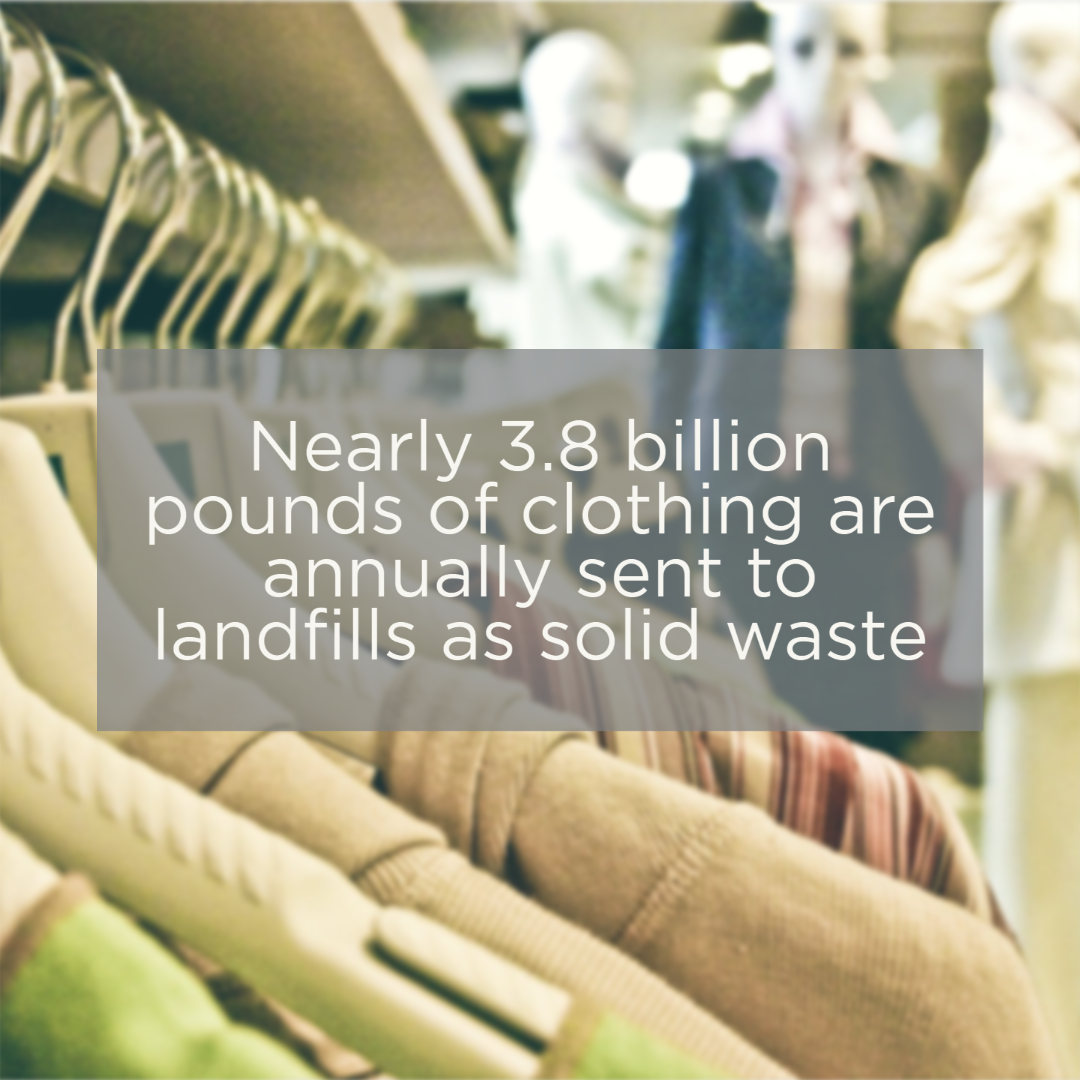Let’s begin with the basics - what is fast fashion? Fast fashion is the trend that takes high fashion looks, converts them to street fashion styles, produces them incredibly cheaply and quickly, and sells the clothing at extremely low cost. This allows for fashion companies to constantly be offering new products, and for consumers to be constantly purchasing, keeping up with the new trends. Since these clothes are cheap and low quality, they deteriorate quicker, and the consumer feels justified that after just a few wears, they can be tossed, making room for the next collection of clothing. Quite an exhausting cycle, but nonetheless, it continues! At a quick glance, it may seem like the problem at hand is that this may be a scam for these companies to make money, but it goes far beyond this. We are here to ask the questions “Where did these products come from, and where do they go after use?” Let’s dive into the life cycle of fast fashion.
Fast fashion began as far back with the Industrial Revolution, where mass production of clothing first became possible. Thank you, sewing machine! As we go further into the 20th century, clothes were no longer mended, remended, and reused, but instead replaced by new fabrics, new styles, and new trends. Enter the 21st century, when ecommerce boomed and fast fashion trends soared. Companies are releasing new products every other week, consumers are purchasing from their homes, and everything is extremely cheap. How are these companies able to come out with this immense amount of product, at such a quick rate, and at such a low price?
Seems rather impossible, right? Well, big brands have turned towards LMIC’s (low and middle income countries) and cheap materials. They saw the potential to take advantage of the cheap materials and labor they supply, and began using materials such as synthetic polyester and conventionally grown cotton, and employed low income clothing factories, who are typically guilty of toxic working conditions, extremely low pay, and impossible hours. Think: 10 hrs a day, for $1, exposed to toxic chemicals found in materials and tools. Impossible, indeed. The terrible working conditions of these artisans should be enough alone to make us pause. However, there is still more to cover.
The utter amount of materials needed to fuel the production in the world of fast fashion has also posed big environmental issues. For example, the conventional cotton industry is extremely water dependent. Approximately 93 billion cubic meters of water are consumed every year in the garment industry, which would be enough to meet the needs of 5 million people! Just one cotton t-shirt can take up to 2,700 litres of water, and a pair of jeans can take up to 3,781 litres, including cotton growth, washing, processing, and dying. Unfortunately water consumption isn’t the only environmental issue. The conventional cotton uses 20% of the world’s toxic pesticides, which lead to water and soil pollution, and serious health issues.
Big issues so far. However, the cycle is not yet complete. Now, once the clothing is made, it is sent overseas, and mass sold to consumers, and everyone has the newest trend of the week. However, next week rolls around, and there is a new trend that surfaces. The consumer wears the then stylish item once or twice, is told it is out of style, sees that it was cheap and is already losing quality any way, and tosses it. The Environmental Health Perspectives released a study that claims Americans throw out approximately 85% of their clothing annually, averaging about 80 pounds a person, altogether 3.8 billion pounds a year. So… where does this all go?
Good question. Once tossed, a portion does indeed make it into the thrifting cycle, which helps combat the effects of the industry. Another 25% of American used clothing is exported back out of the US to LMIC’s, primarily Southern African Countries, and resold as used clothing. However, at the end of the day, nearly 80% of used clothing ends up in landfills or is incinerate, whether it is directly from our homes, or after it has been sorted through in those other countries. 80%! In 2018, 17 million tonnes of textile waste ended up in landfills, and with the synthetic fibers that are widely used now, such as nylon, polyester and acrylic, that are made from petroleum (a type of plastic), it can take up to 500 years to biodegrade. This type of waste is also a major contributor to the microplastics being found in the ocean. Some may ask, what about incineration? Well, incineration does reduce the waste, but in the process, it also releases toxic chemicals into the air, causing pollution and carbon emissions. Once all is said and done, the textile industry as a whole contributes to approximately 10% of the global carbon emissions.
Let’s recap:
Awful working conditions
Unsustainable water consumption and pesticide pollution
Million tonnes of almost non biodegradable textile waste
Extremely high carbon emissions
So, now we know this is bad news, and with all this information, it may sound daunting. What is the good news? We are so happy you asked! Consumers are starting to realize these issues, and are asking for change from the fashion industry, and brands are speaking back. Movements to ensure eco-friendly processes, organic cotton, ethical working conditions, and high standards to ensure quality are being heard. Organizations like GOTS and B Corp are holding business accountable, and consumers are being educated! Trends like creating Capsule Wardrobes, thrifting your looks, and seeking out sustainable brands are becoming more widespread. In the following blog, we will begin to talk about how YOU specifically can challenge the fast fashion industry, and work towards a more sustainable, cleaner fashion industry.
Resources:
https://ehjournal.biomedcentral.com/articles/10.1186/s12940-018-0433-7#Bib1
https://goodonyou.eco/fast-fashions-environmental-impact/
https://unfccc.int/news/un-helps-fashion-industry-shift-to-low-carbon
https://ehp.niehs.nih.gov/doi/10.1289/ehp.115-a449


